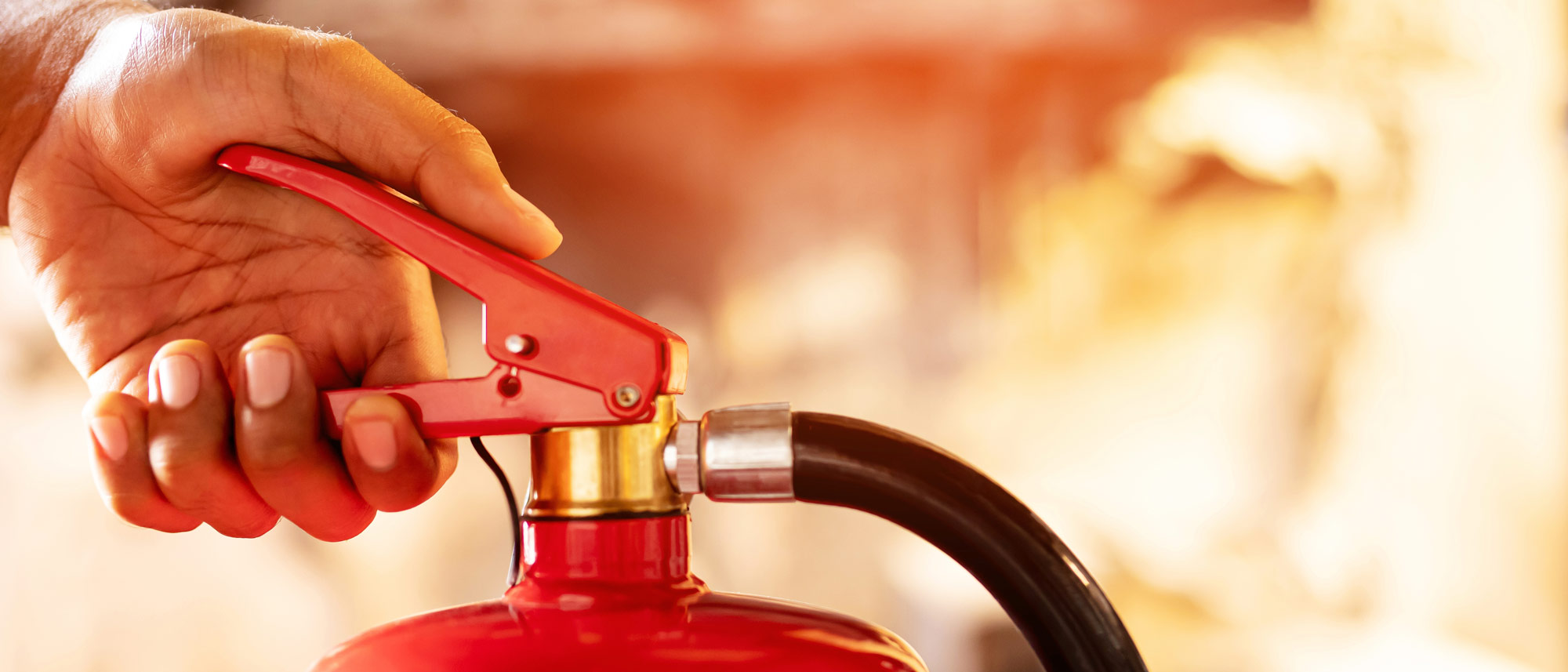
Tips to maintain an effective and compliant portable fire extinguishers program in your facility
6 PORTABLE FIRE EXTINGUISHER BEST PRACTICES
According to the Occupational Safety and Health Administration (OSHA), workplace fires and explosions kill 200 and injure more than 5,000 workers each year.
Portable fire extinguishers can be an extremely effective tool in combating small fires within the workplace. Employers must place them in the workplace as required by OSHA.
Under OSHA’s portable fire extinguishers standard, 29 Code of Federal Regulations (CFR) 1910.157, there are several specific requirements for the placement and setup of portable fire extinguishers. It’s paramount that your organization fulfills those requirements to stay in compliance with the standard and avoid costly citations.
Portable fire extinguishers should be:
- Easily accessible
- Located near exits or in areas with a higher risk of fire
- Mounted on brackets or in cabinets at a height that is easily reachable for employees
- Fully charged and operable condition at all times. Only extinguishers with approval from a recognized testing laboratory can be used
- Clearly labeled by the type of fire extinguisher and intended use so employees can quickly identify the appropriate extinguisher for the type of fire they are dealing with
- Regularly maintained and inspected (visual inspections by trained employees should be monthly
Employee training is key
Employers should provide training to employees on how to properly use them in case of a fire emergency. When a fire occurs in the workplace, employees must take immediate action to minimize damage and protect themselves from danger. Inadequately trained employees may panic, elevating a small fire into a devastating disaster. There is no room for compromise when human life is at stake.
It is important to prioritize fire safety in the workplace and take proactive measures to prevent and respond to fire emergencies effectively.
To maintain an effective and compliant program in your facility, employers should consider these tips:
• Create a map or list of all fire extinguisher locations in your facility, especially if you have a large facility. This will ensure you don’t miss any individual extinguishers when it comes time to conduct inspections, tests, and maintenance. You don’t want your employees to find themselves reaching for an empty extinguisher during an emergency.
• Regularly discuss fire safety through meetings, reminders, and safety campaigns.
• If forklifts are used in your facility, keep an extinguisher on each for easy access. Just don’t forget to inspect, maintain, and test these extinguishers the same way you would with the other portable fire extinguishers in your facility.
• Ensure they are never blocked by any obstacles that could prevent employees from quickly and safely accessing them in an emergency. Even if your facility uses an outside company for inspecting and maintaining your portable fire extinguishers, someone in the facility should also perform regular visual inspections that include ensuring each extinguisher is readily accessible and in its designated location.
• Evaluate the types of potential fires in your workplace and choose the appropriate extinguisher classes (e.g., A for ordinary combustibles, B for flammable liquids).
• In addition to required labels and tags, highly visible identification signs should be placed at each mounted fire extinguisher so employees can easily find them and see where the various fire extinguishers in the facility are located.
• Many states have regulations that impose additional requirements for portable fire extinguishers, which may be stricter than the federal requirements. Know what your state requires so you can keep your facility in compliance.
• Don’t hesitate to consult with qualified fire protection professionals or your local fire department for specific guidance on your program.



